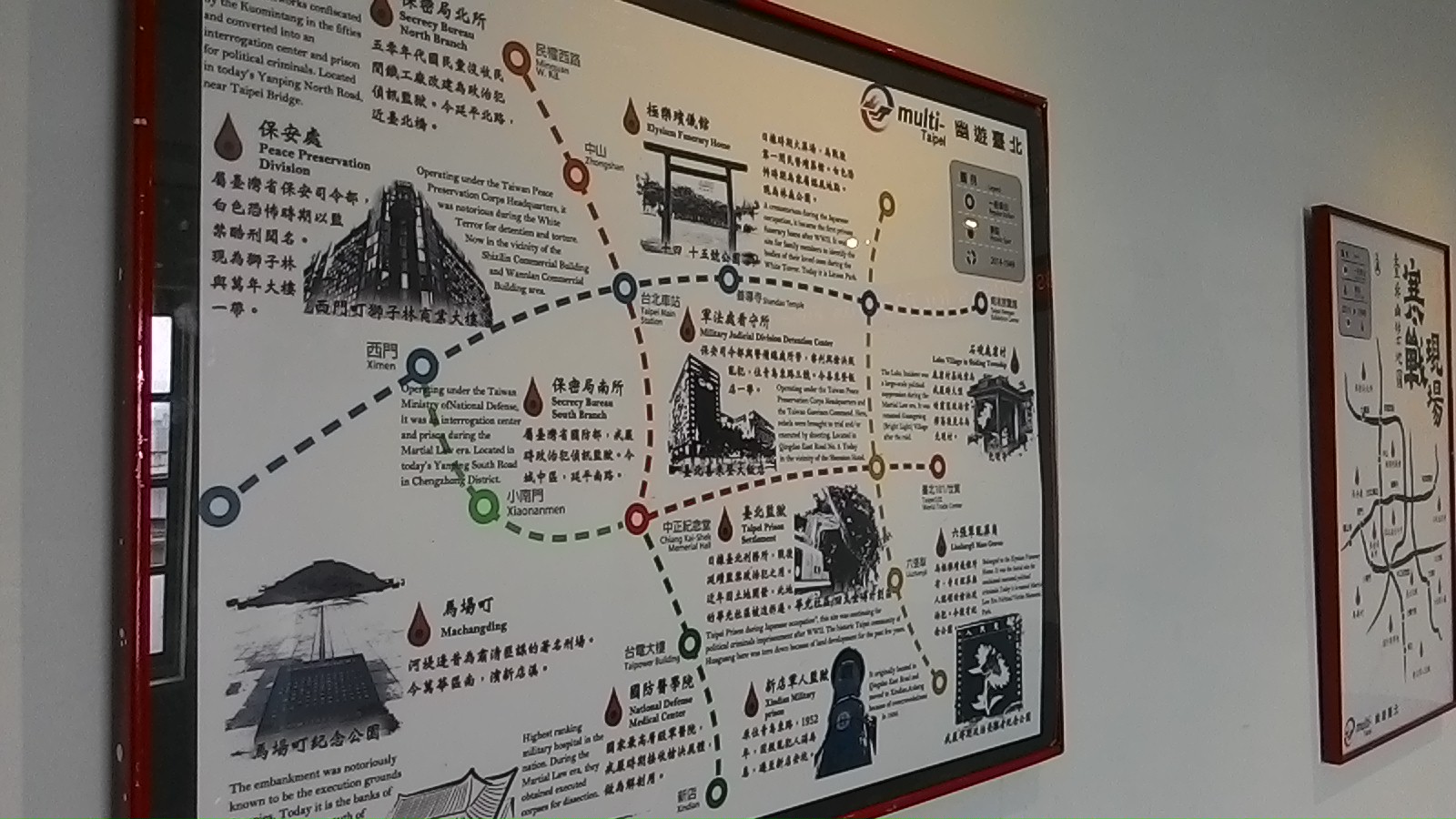【亞太博物館連線專欄】紅字團:2014-1949—思考白色恐怖受難者的多元樣貌與展示
The Red Bloc: 2014-1949- Thinking about the Diversity and Display of White Terror Victims
紅字團:2014-1949—思考白色恐怖受難者的多元樣貌與展示
The Red Bloc: 2014-1949- Thinking about the Diversity and Display of White Terror Victims
作者∕攝影:謝典翰(國立臺灣藝術大學藝術管理與文化政策研究所碩士生) 編輯:田偲妤
1949年至1991年間國民黨政府頒布戒嚴令,當權者對台籍菁英、革命地下黨人、政敵進行鎮壓與搜捕。白色恐怖期間無數民間對抗政府的人士成為政治犯,被關進監牢或被槍決。六十多年過去,台灣已民主化,現今政府推動轉型正義,並設立國家人權博物館,還原真相。官方將白色恐怖定調成當權者為鎮壓異己而製造冤錯假案,然而民間由AIA(Art In Action)主辦,差事劇團、台灣地區政治受難人互助會協辦的展覽「紅字團:2014-1949」,卻試圖對白色恐怖作出不同的歷史敘事。本文將從「紅字團:2014-1949」的體驗,反省官方對白色恐怖的主流詮釋。
關鍵字:白色恐怖、歷史記憶、人權博物館、灰色博物館、多元展示
From 1949 to 1991, the Kuomintang government imposed the martial law that saw the suppression and hunting down of Taiwanese elites, members of unregistered revolutionary parties, and political opponents. During this period of White Terror, countless anti-government individuals were labelled political criminals and were either imprisoned or executed by shooting. Sixty odd years later, Taiwan has become democratized. The current government is promoting transitional justice and has established the National Human Rights Museum in order to recover the truth. Officially, the White Terror is generally defined as wrongful cases that the authority fabricates for the purpose of suppressing dissidents. However, “The Red Bloc: 2014-1949”, an exhibition organized by the Art In Action and co-organized by Assignment Theatre and Taiwan Area Association for Political Victims Mutual Aid, seeks to provide a different historical narrative of the White Terror. This article will reflect on the official mainstream interpretation of the White Terror through the experience of “The Red Bloc: 2014-1949”.
Keywords: White Terror, historical memories, Red Bloc: 2014-1949, National Human Rights Museum, diverse exhibition
單一敘事與二元對立的危險
今年五月國家人權博物館正式揭牌,揭牌儀式中蔡英文總統表示,國家人權博物館作為亞洲第一個以不義遺址為主軸的人權館,盼藉此基地,向世界分享台灣民主、人權發展經驗,彰顯台灣是勇於反省歷史的國家(周思宇,2018)。官方博物館做為觀者學習及反省歷史的場所,博物館策展人及團隊藉由選取與展示真實的歷史物件,建構敘事觀點的論述時,必須避免落入單一敘事與二元對立的框架中,以免觀者無形中便將博物館的展演視為真實的再現,而服從館方與策展人隱藏的權威(Linenthal, 1994;轉引自陳佳利,2007)。
今日討論白色恐怖的歷史時,由於不同的政治認同,各陣營的受難者與政治或知識菁英對這段歷史有自己的詮釋。這些歷史敘事主要可分作兩種:一種關注社會主義革命的組織者、抗爭者被當權者壓制的歷史;另一種則將白色恐怖視作當權者利用國家機器鎮壓異己的歷史,政治受難者是當權者製造冤案迫害所造成的。後者論述伴隨著台灣人民族主義的抬頭,以及國內博物館公務體系過度依賴既有的執行廠商1,使白色恐怖為當權者冤假錯案的論述成為主流,而白色恐怖為左翼地下黨人在冷戰下被國民黨肅清的論述則在官方的說法中式微(葉虹靈,2015)。事實上,民間與政府的對抗並非單純民族情節的二元對立,而是呈現不同的思想與面貌,萌芽各種多元的意識形態。侯伸宏整理戒嚴時的政治案件,就將其分作八種類型:對親中共或左翼言行的打擊、對台灣獨立運動及主張者的整肅、對原住民菁英的整肅、對民主運動的壓制、政治權力鬥爭、文字獄、情治特務單位的內部鬥爭、特務人員爭功領獎的冤假錯案(侯伸宏,2007)。
「紅字團:2014-1949」與觀者對話的歷史詮釋
有別於官方對白色恐怖的主流論述,民間在2014年提供了另一個白色恐怖敘事的展覽「紅字團2:2014-1949」。這場由AIA(Art In Action)主辦,差事劇團、台灣地區政治受難人互助會、寶藏巖國際藝術村協辦的展覽,使用了寶藏巖的52號、54號、71號展間,共展出四件作品,每位創作者使用約22坪的空間進行創作。四名創作者試圖拉出另外一條軸線,解釋白色恐怖的發生原因,當時的當權者為何做出暴行,又是什麼因素讓他們有所憑依的施暴?創作者結合歷史背景,透過魔幻寫實的手法,有別於歷史物件的擺設,陳設的全為裝置作品。在這裡藝術作為手段拉出歷史情境,在情境中創作者試圖跟觀者對話,共同形塑對白色恐怖的歷史詮釋。
第一件作品「幽遊台北」(圖1)由張之穎所創作。張之穎將展場布置成日常的捷運場景,然而捷運的路網圖卻註記了過去政府監禁、行刑白色恐怖受難者的地點,讓日常人們通勤、生活的場域與不義遺址交疊,暗示老大哥的監控與迫害滲透到人民的生活中。跑馬燈、禁令的圖示更象徵了規訓的無所不在,以及違反規訓的慘痛後果。
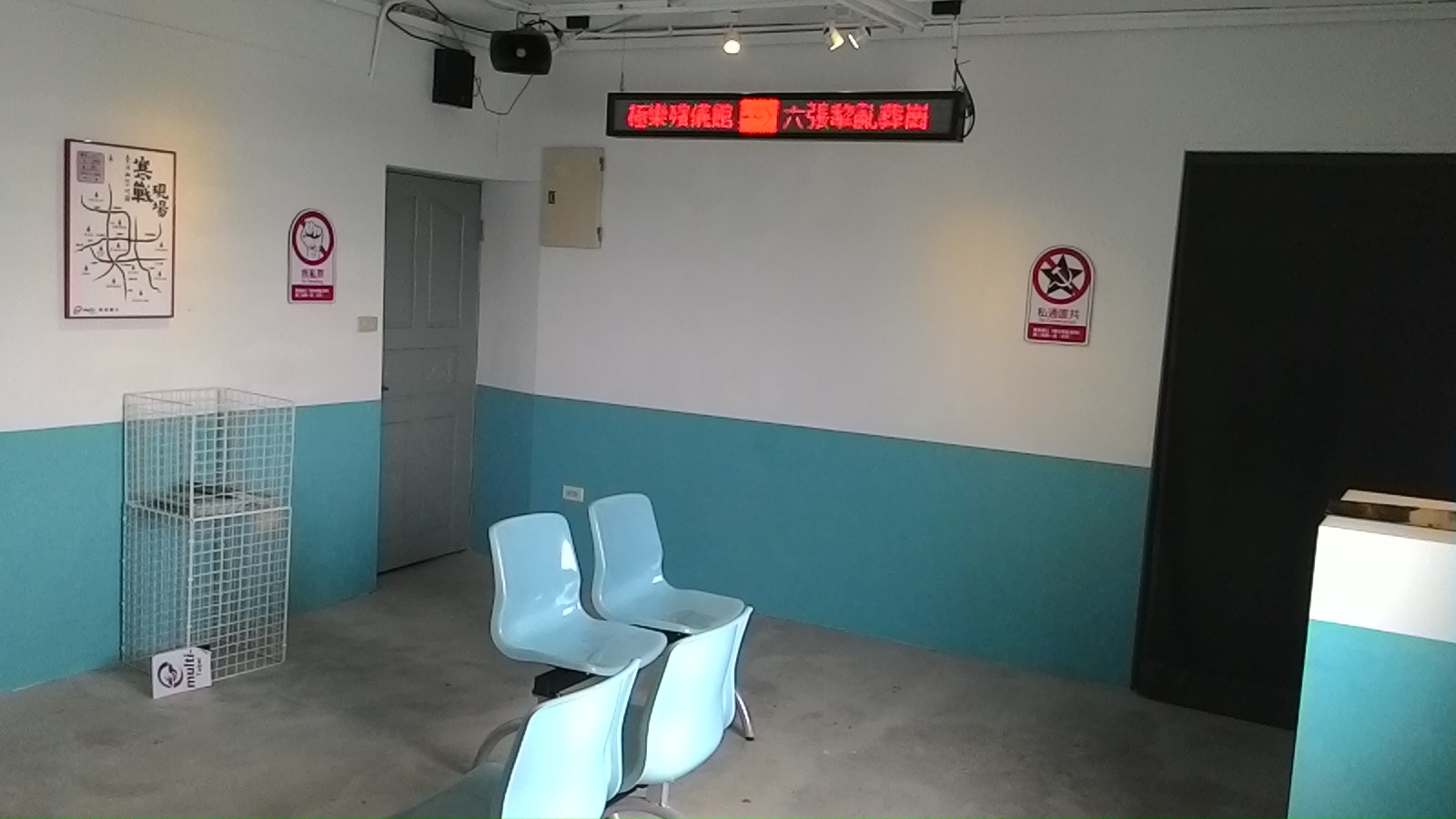
再往樓上走,則是郭俞平創作的「東方彌賽亞」。展場內放置了1950年代的書籍、廣告、政府文宣。當時出版受到政府管制,導致出版品充斥滿滿的規訓味。蔣介石的新生活運動、中國倫理、美滿家庭、革命救國、美國的先進樣貌、反共的標語與形像充斥在書本與廣告中,展場的一面牆布滿政府無孔不入的宣傳。在展場的另一面牆上,郭俞平放上了自己的作品「延遲與凹洞」、「東方彌賽亞—那路」(圖2)及白色恐怖受難者遺書,與政府的美好宣傳對立。郭俞平的兩幅作品暗示了政府宣傳中排除了破敗、工業污染、老化城鎮。揭露政府與美國攜手宣揚反共而進步的國家,背後的陰影竟是如此的不堪。
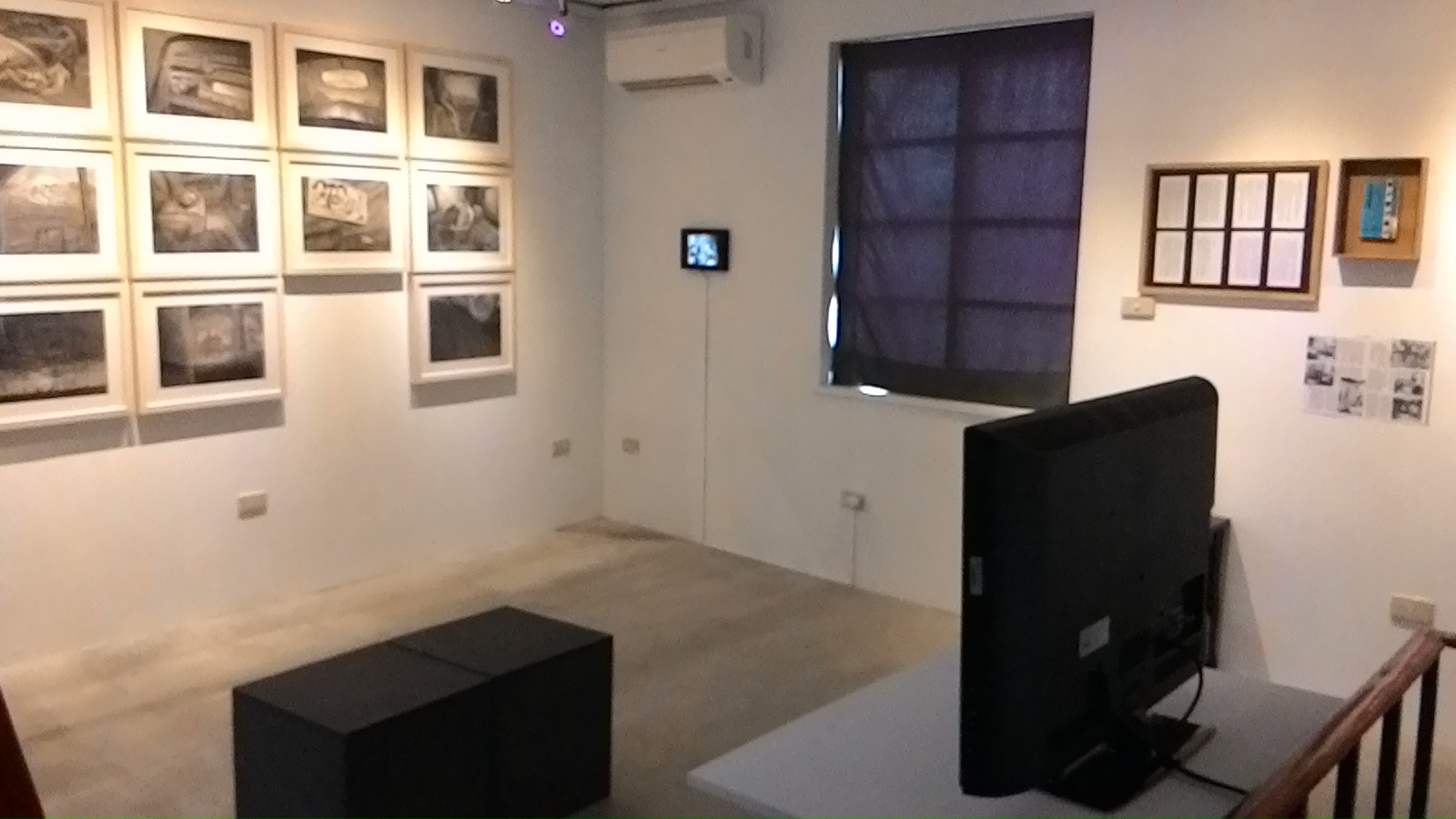
走入另一處展區,首先看到的是作品「無地」。無地的創作者李哲宇將壓克力板做成墓碑狀散落在水池中,象徵白色恐怖受難者行刑後的大體被泡在國防醫學院的福馬林池內,再被政府拿來給醫學院解剖,或讓美術系認識身體構造。狀似隨意棄置的墓碑也象徵著1993年台灣地區政治受難人互助會發現的,六張犁白色恐怖受難者亂葬崗,一塊塊墓碑等待著家屬找尋辨識(圖3)。水池的源頭布滿了玩具兵,呈現兩個陣營對峙的景象,象徵美蘇冷戰對峙下,親美反共的肅殺氣氛是迫害的根源(圖4)。
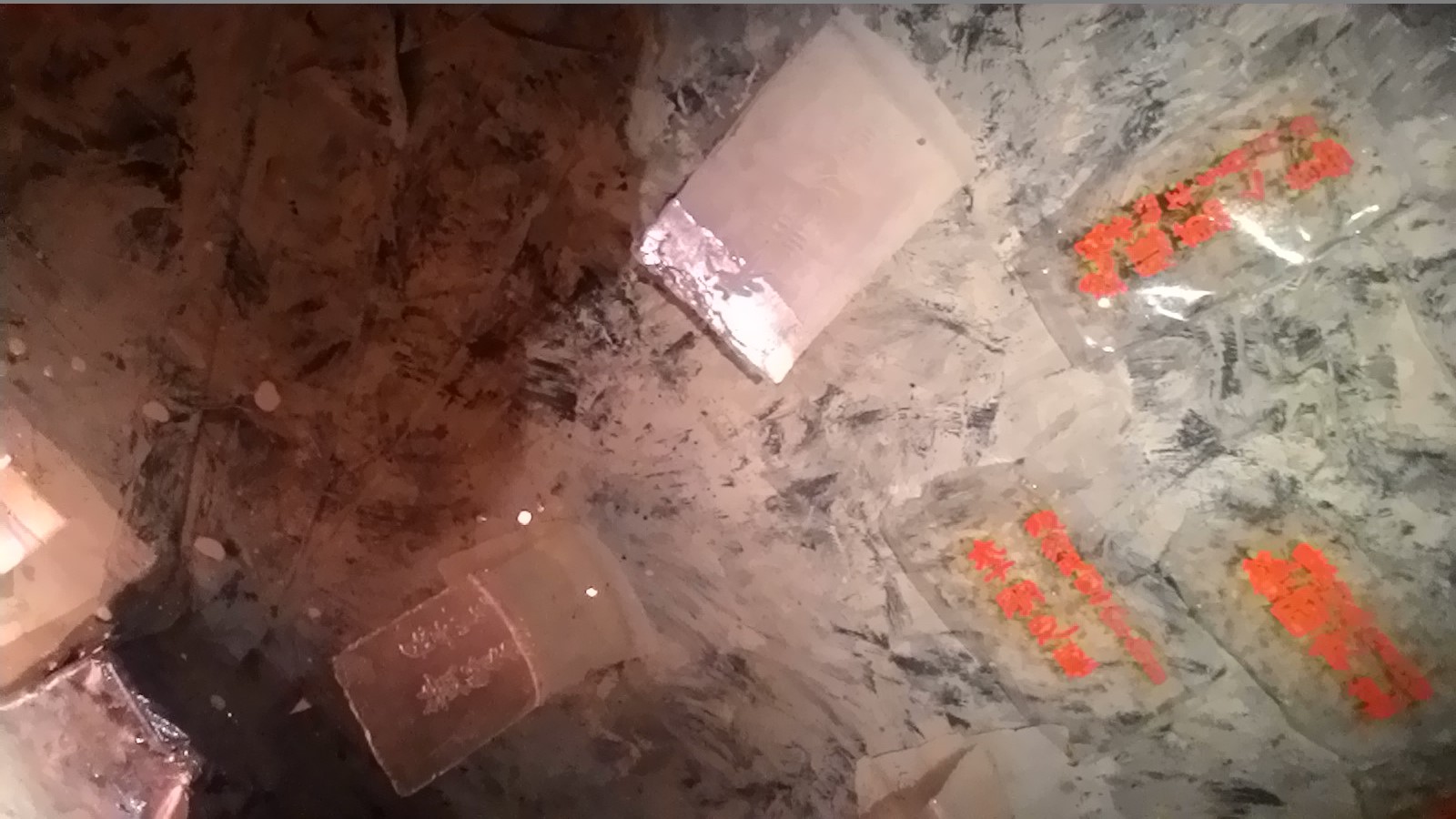
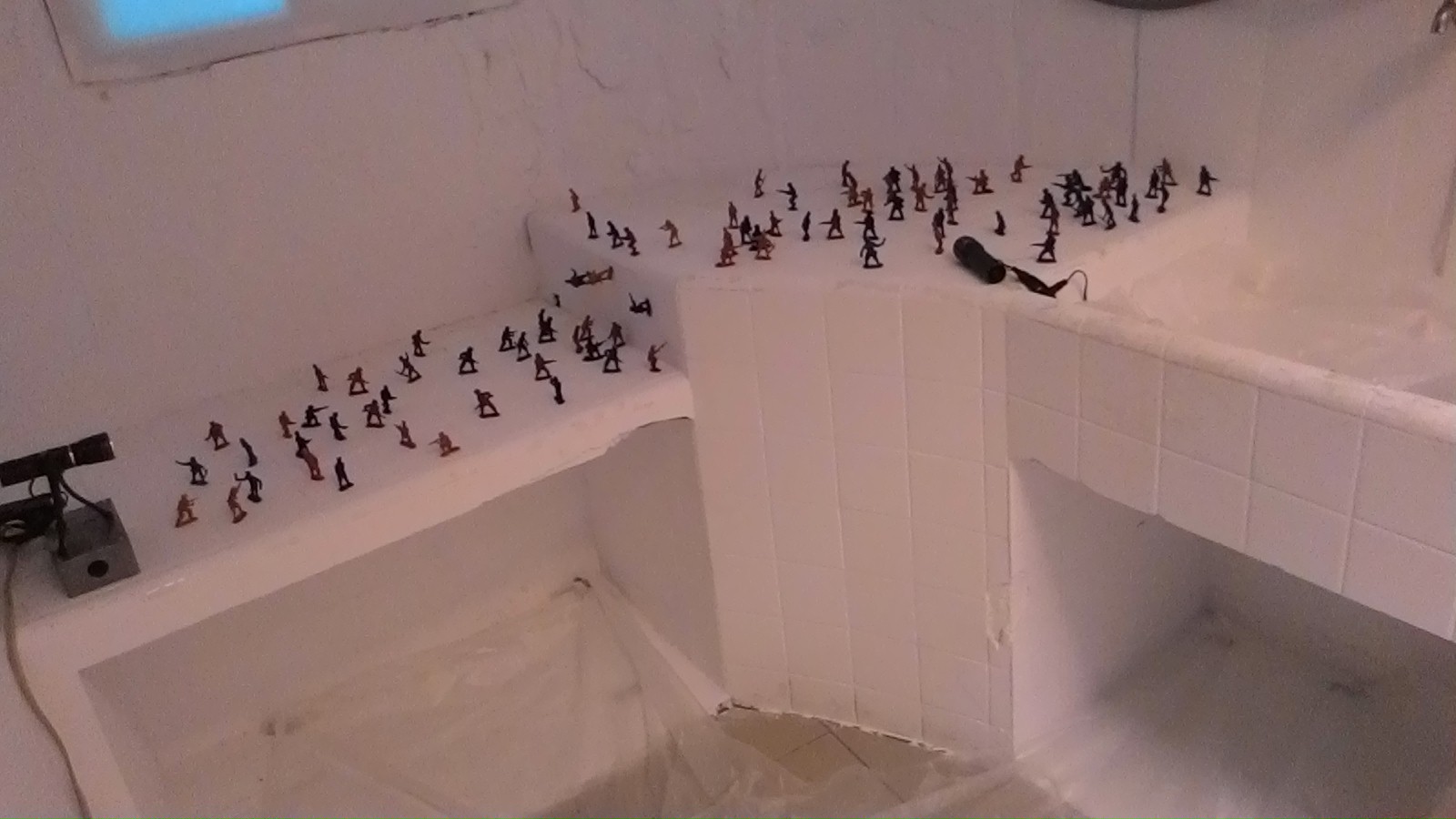
最後是許孟祥的作品「迴聲」,展場被布置得如同牢房,地上則寫著白色恐怖受難者在獄中傳唱的「安息歌」、「我們為什麼不歌唱」、「度過這冷的冬天」、「青春戰鬥曲」四首歌的歌詞。透過聲音裝置,白色恐怖受難者馮守娥女士的歌聲迴盪在空間中,再現關押在新店軍人監獄的叛亂犯,用歌聲及目送向慷慨就義的同志訣別,這悲壯而冷冽的場景是真實存在的歷史。
脫離權力與文化的制約,呈現歷史的多元樣貌
差事劇團團長鍾喬在評論「紅字團:2014-1949」時談到,展覽除了挖掘過去殺戮的苦難歷史,同時也呈現了歷史被棄置而破壞的一面,如同於六張犁發現的受難者墓碑,現今重新被挖掘出來,但又要如何面對這段歷史(鍾喬,2014)?在「迴聲」中獻聲的馮守娥女士,其故事在時隔一年後再次出現在景美人權文化園區的展覽「獄外之囚—白色恐怖受難者女性家屬口述紀錄成果展」。在展覽中與館方的手冊上呈現了馮守娥、其兄馮錦輝與其夫陳明忠被關押、行刑的故事,但到底為何與政府對抗?他們的主張與加入地下黨的人生經歷為何?則在展中鮮少著墨,使得白色恐怖不同陣營的歷史敘事仍無法接合,更無法與大眾對話共同的歷史創傷。雖然歷史真相只有一個,但對於不同的政治陣營與社會想像,甚至是解決政治問題的人,歷史記憶會有各種面貌,書寫的方式也會不同。期待有一個共同的政治社區,讓不同的歷史記憶共存,理解彼此的歷史感情(吳乃德,2008)。在博物館的經營上,林崇熙更提出「灰色博物館」的概念,主張博物館要成為社會議題的公共論壇,脫離權力與文化的制約,挖掘社會議題及建構另類觀點,讓大眾得以多元思考(林崇熙,2007)。
在「紅字團:2014-1949」的展示中,策展方有別於官方以冤假錯案為基調的白色恐怖歷史敘事,而是以大歷史架構的敘事將白色恐怖置於其中。六十多年過去了,站在現今與過去交錯的場景,試圖感受那個思想受壓制的年代,如今我們能談論那段前人被壓抑的歷史,但前人的主張又記得多少?
註釋:
- 葉虹靈發現成立國內初期設立傷痕遺址,因國家沒有「人權」專責單位,故在規劃經營上多採公辦民營的委外方式經營。在之後的園區規畫上,因公務體系的專業能力依然不足,引入民間資源,業務越趨仰賴外包,也使既有的委任廠商及民間專業人士更嫻熟公務體系的委外體系,故得標廠商與既有廠商重複性高。
- 「紅字團」,名稱所指的是在1993年於台北六張犁山區,發現201塊刻有紅字墓石的白色恐怖死難者亂葬崗。
The Red Bloc: 2014-1949- Thinking about the Diversity and Display of White Terror Victims
Author: Dian-Han Xie (Master, Graduate School of Arts Management and Cultural Policy, NTUA) Editor: Sally Sz-Yu Tian
The danger of a single narrative and a binary opposition
The National Human Rights Museum was inaugurated by President of Taiwan Tsai Ing-Wen in May, 2018, and in the ceremony, she said that as the first human rights museum lain on an unrighteous location, the National Human Rights Museum should share the experiences of Taiwan’s democracy and human rights development with the world, enhancing Taiwan as a self-introspective country. A national museum is a place for learning and reflecting history, the curator and the team should avoid making a narrative with a single story or binary oppositions. By displaying historical relics, viewers can directly look at the truth of history instead of obeying any perspective a museum conveys.
While discussing the history of the white terror nowadays, due to the differences of political identity, the victims and elites of different parties have their own interpretation of this period. The types of the white terror narratives can be divided into two kinds: one is the history of the authority suppressed revolutionists and protesters, the other is seeing the white terror as a part of time when the government cracked down the dissenters with state apparatus, and victims of political persecution are caused by intentional injustice. The opinion of the latter is based on the rising of Taiwan nationalism and the actual situation that official system of domestic museums overly rely on cooperative vendors, allowing this narrative becomes a mainstream theory and declining the position of official announcement that it’s for KMT to purge left-wing underground party in the cold war. In fact, the resistance towards the Taiwan government is not simply a binary opposition of nationalism but presenting different thoughts and sides and developing ideology. Ho Shen-Hong had got together the cases on politics under martial law and make them eight kinds: the crack down on the speech and act of pro-communist and left-wing, suppression towards the advocate of Taiwan independence, aboriginals, democratic movements, the political power struggle, literary inquisition, the power struggle inside the agents organization, and the reward of the agents leading to unrightful trials.
The Red Bloc: 2014-1949” interactive history interpretation
Non-governmental organization provided another exhibition “The Red Bloc: 2014-1949” in 2014 towards the white terror which approaches the incident differently. This exhibition was held by AIA (Art in Action), and co-organized by the assignment theatre, Taiwan political victim’s association, Treasure Hill artist village. Each of the four artists are allowed to use a 66 square meter space each to create 4 exhibitions located inside space no.52, no.54 and no.71. The four artists used different perspectives to explain the reason how the white terror happened, why the government used violent act and did it naturally. They expressed the white terror differently by displaying historical relic, through a magical realism touch, the artists interacted and re-constructed the period of white terror with the viewers.
In “Roaming in Taipei”, created by Chang Zhi-Ying, Chang decorated the space with daily scene inside the MRT and marked the location which governments once imprisoned and executed victims in the route map, overlapping the present and the past. This work is to imply how the authority monitors and hunts people in daily lives, and also shows the serious consequence of disobeying the regulation.
Going upstairs, you will see the work of Guo Yu-Ping “Eastern Messiah”, displaying the books, advertisements and government flyers of 1950s, when the publication was restricted and had been a tool for government to preach. On one of the walls inside the exhibition, Guo arranged all kinds of propaganda including Chiang Kai-Shek’s New Life Movement, Chinese ethic, happy family, revolutionary for saving your country, advanced life in U.S.A. and the anti-communism; on another wall, Guo puts his own works “Delays and Cavities”, “Eastern Messiah – the road” and letters left by victims, which in opposing positions to those fairy tales. Guo implies that underneath the wonderful illusion of anti-communism alongside U.S.A as a progressing country is the society full of destruction, industrial pollution and aging labor force.
The next exhibit “No-Land” comes up when you walk to the other side of the exhibition. Artist Lee Zhe-Yu cut acrylic sheets into gravestone shapes, scattered in the water pool, symbolizing the corpses of the victims soaked inside the formalin at the National Defense Medical Center, dissected by the center to demonstrate human body to Medical students or displayed to students from department of fine arts to observe body and muscle structure. The acrylic sheets are demonstrated randomly symbolizing the tombstones found by Taiwan political victims association in 1993 at the mass grave of the white terror located in Liuzhangli, still waiting for their families to recognize. The water source of the pool is covered by toy soldiers, indicating the scene of standoff between the United States and Soviet Union at the cold war. The origin of this suppression is brought by the harsh vibe under the situation of pro-U.S.A and anti-communism.
The last work is Hsu Meng-Xiang’s “Echoes”. Hsu arranged the space like a prison chamber with the lyrics of four songs “R.I.P.”, “Why don’t we sing?”, “Spend this cold winter” and “Fight in Youth” written on the floor. Through the audio devices, the singing from one of the victims, Mrs. Feng Shou-Er echoes in the room, recreating the scene where the rebels in the military prison located in Xindian sung their last goodbyes to the partners who died a hero. What a tragical and unbearable moment in the history.
Running away from the restriction of power and culture, and presenting the diversity of history
Zhong Qiao, the head of the Assignment Theatre, mentioned that the exhibition not only represents all the sufferings from the slaughters throughout the history of white terror but also the history that has been erased. How do we face the history when graves in Liuzhangli were excavated now? The story of Mrs. Feng Shou-Er had been displayed in the exhibition “Absent prisoners in person─ Oral narratives from the female family members in the white terror” in Jing-Mei White Terror Memorial Park after one year. The stories of Feng Shou-Er, her brother Feng Jin-Hui and her husband Chen Ming-Zhong being detained and executed is in the brochure of the exhibition and the museum. But why did they participate in the fight? What were their claims and experiences joining the underground party? The answers are nowhere to be found in all these exhibitions, making it much more difficult to assemble different narrations from all the groups from the white terror and put together the whole puzzle. This situation also results in losing the opportunity to share the pain of the whole story with the public. Although there is only one truth and fact of our history, for diverse political parties and for those solving political issues, the memories have various aspects with different social expectations and narratives. We look forward to having a political community that can share different historical narratives and understand each other’s view and opinion. When speaking of running a museum, Lin Zhong-Xi brings up the concept of “The Gray Museum” and proposes the view of making a museum the public forum, finding social issues and providing diverse viewpoints with no limits.
In “The Red Bloc: 2014-1949”, the curators used wider historical structures to tell the stories of the white terror from the usual official statements. Standing in the crossroad of time over the past sixty years and the present, we try to feel the era of thought suppression. Now we can easily discuss the history of the deceased, but how many claims of them do we remember?
Annex:
- Yeh Hong-Ling discovered the historical site established in the early time. Because there was no responsible section for “human rights”, Taiwan usually outsourced to private companies. Afterwards, due to the lack of professional capacity in the public system, the businesses seriously relied on the same vendors which are familiar with operation.
- “The Red Bloc" refers to the mass grave of the white terror victims buried under 201 tombstones carved with red letters, found in Liuzhangli area, Taipei in 1993.
參考文獻 References:
- 林崇熙(2007)。灰色博物館:詮釋與溝通的動力基地。博物館學季刊,21(4),頁5-25。
- 周思宇(2018年5月17日)。國家人權博物館今揭牌「現在有一個把轉型正義做好的機會」蔡英文提2項期許。風傳媒。瀏覽日期:2018/07/30。網址:http://www.storm.mg/article/438628
- 吳乃德(2008)。書寫民族創傷:二二八事件的歷史記憶。思想,8,頁39-70。
- 侯坤宏(2007)。戰後台灣白色恐怖論析。國史館學術集刊,12,頁139-203。
- 陳佳利(2007)。生命中不可再現之痛:論戰爭紀念博物館之展示與敘事策略。博物館學季刊,21(1),頁45-59。
- 葉虹靈(2015)。台灣白色恐怖創傷記憶的體制化過程:歷史制度論觀點。台灣社會學,29,頁1-42。
- 鍾喬(2014年8月14日)。在藝術與政治之間。人間福報,第15版。
延伸閱讀 References:
- 關曉榮(導演)(1995)。我們為什麼不歌唱?【紀錄片】。聯影企業股份有限公司。
- 許雪姬、林建廷等(2014)。獄外之囚:白色恐怖受難者女性家屬訪問紀錄。新北市:國家人權博物館籌備處;臺北市:中研院臺史所。
- 吳乃德(2006)。轉型正義和歷史記憶:台灣民主化的未竟之業。思想,2,頁1-34。
- 蕭阿勤(1997)。集體記憶理論的探討:解剖者、拯救者、與一種民主觀點。思與言,35(1),頁247-296。
- 黃旭(2012)。博物館與爭議性主題。博物館學季刊,26(3):5-6。

